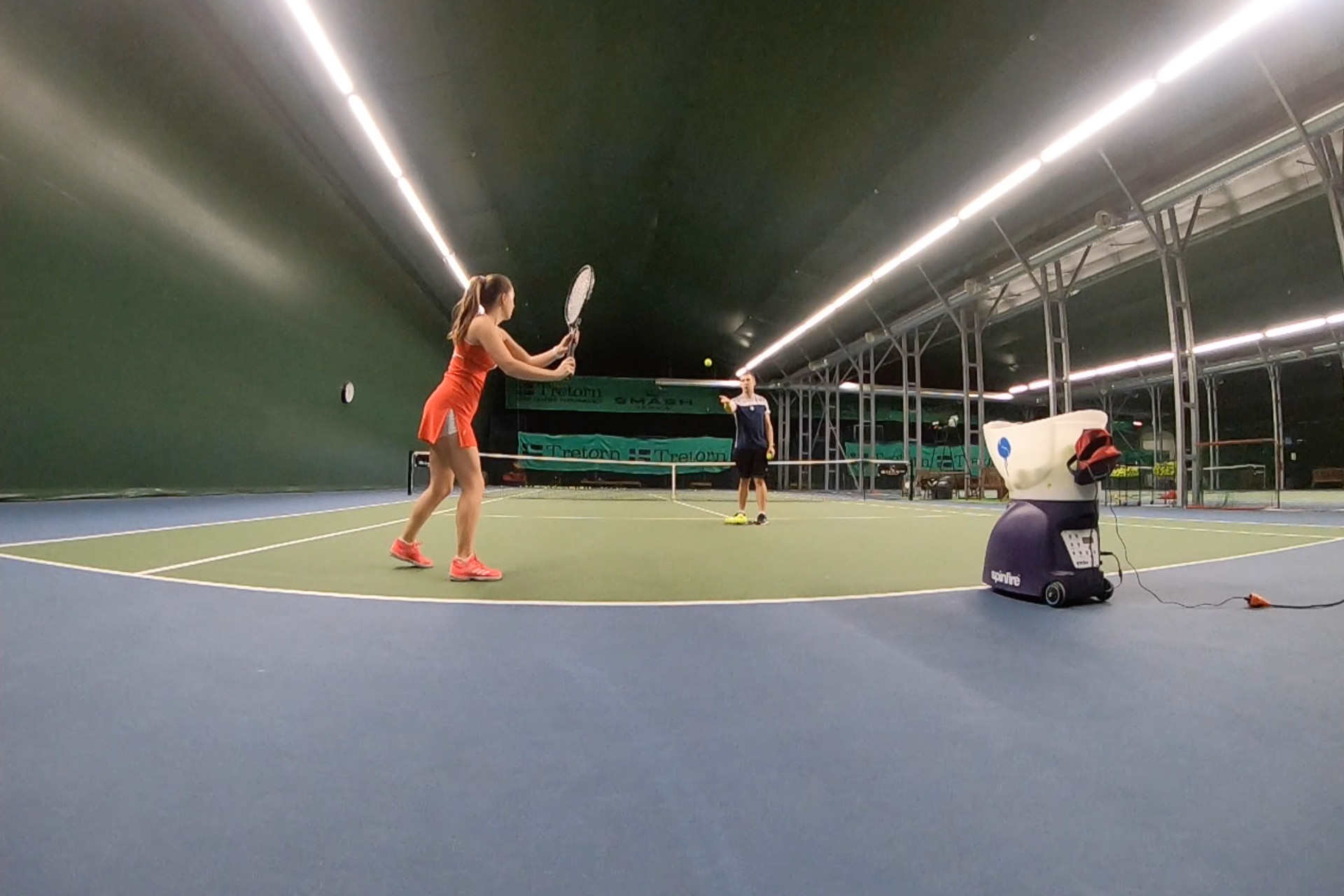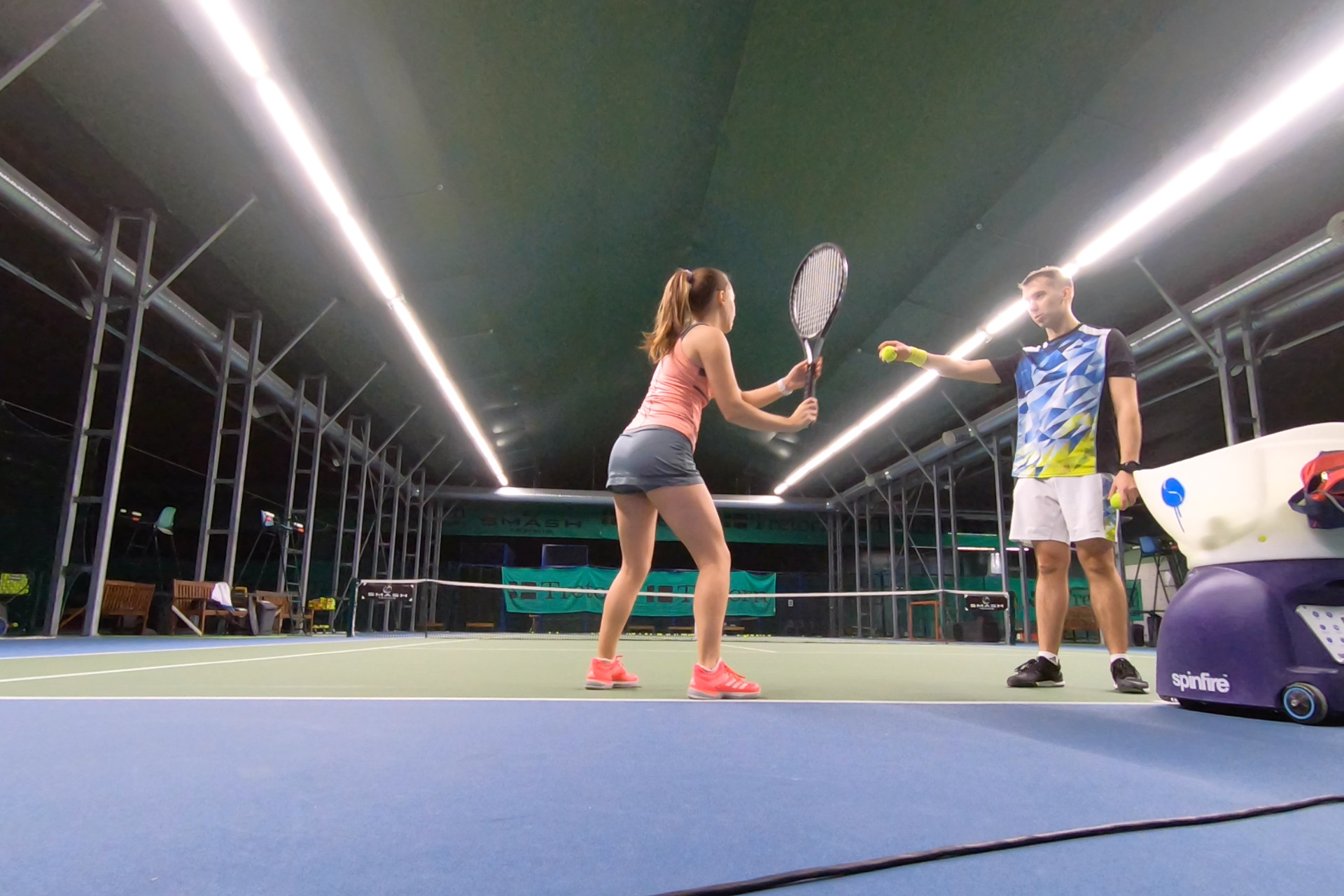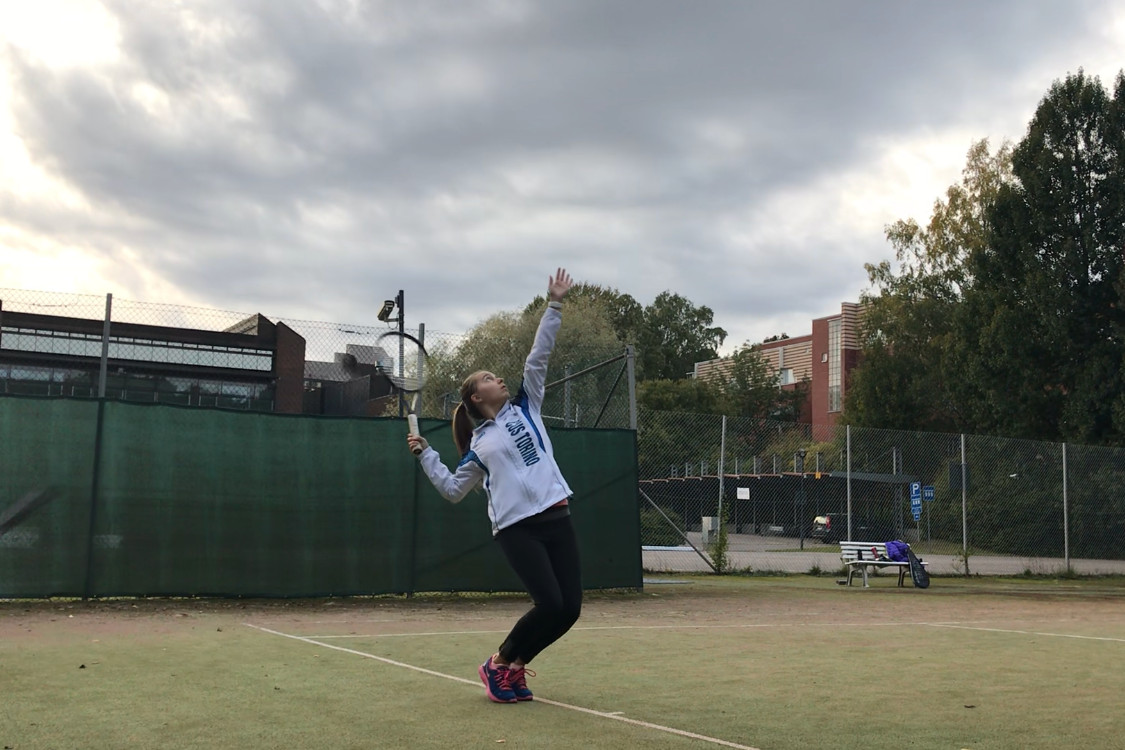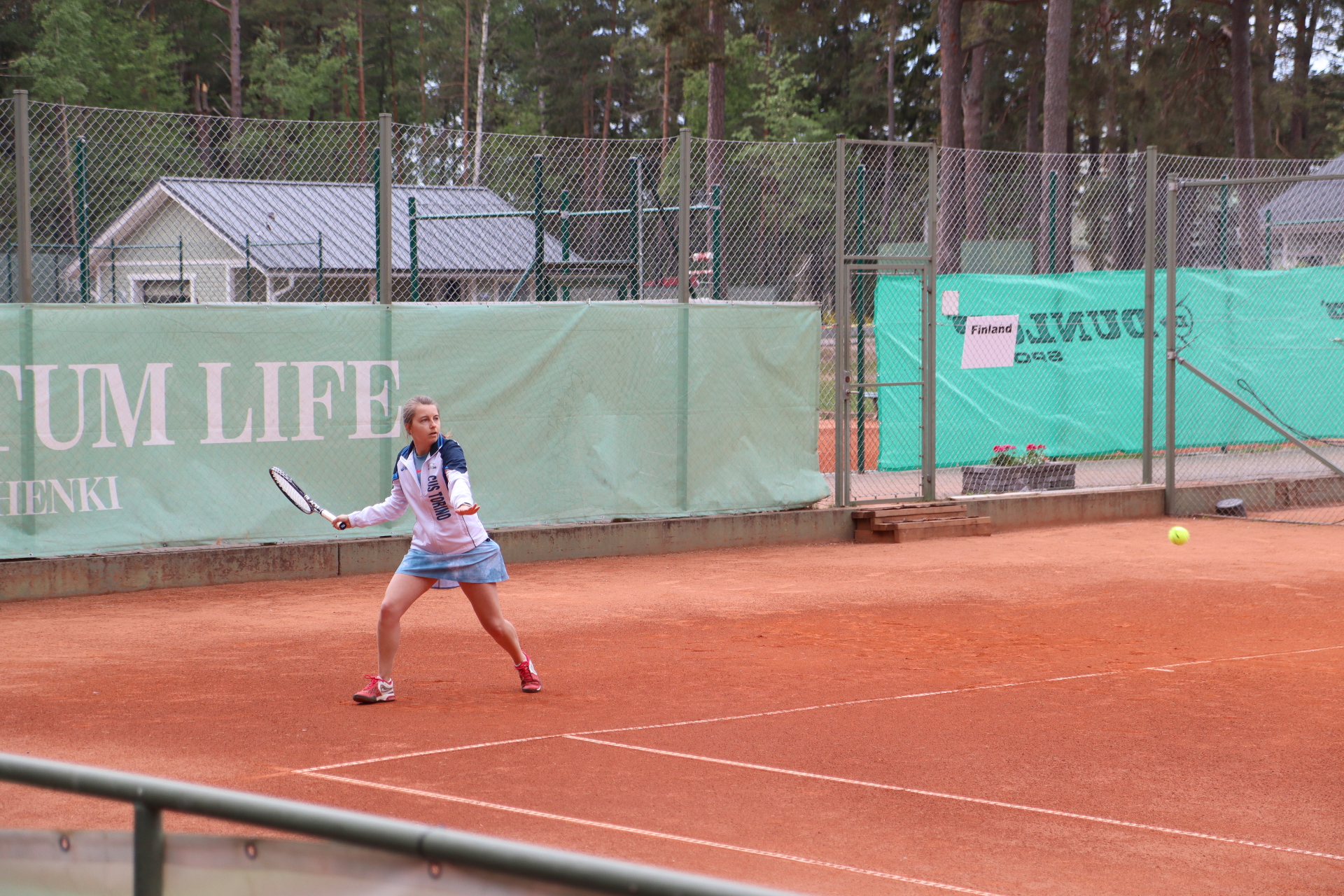Learning the Federer forehand - progress update #1

As you already know, about 3 months ago I decided to say goodbye to my WTA forehand and switch to the Federer forehand. What a brilliant idea 💡 that was!
Apart from jokes, I cannot say yet whether it was the right decision or not. After all, Rome wasn't built in a day 🏰. And so wasn't my forehand 😅. I guess that was to be expected. Or wasn't it❓
Nevertheless, at this point I feel like I NEED to share not only my forehand's progress with you, but also the lessons I learnt and the mistakes I made along the way.
① For myself, so I stay motivated to keep working on it. ② And for you, so you can hopefully avoid some troubles, learn faster and know what to expect. You know, I want to make sure that next time you wonder how hard it can be to change a shot and if that's just you, you know the answer 😅. Very hard. And no, it's not just you!
Because the truth is, nothing is easy until YOU do it. So don't get discouraged and keep practicing: you'll get there when it's time!
I'm Elena Margaria 👋🏻 and just like you, I'm on a mission to become the best tennis player I can 🥇. Even without a fancy team, or too much talent. Just with a huge desire to make it. That's why Tennis Rematch exists: to share everything I learn along the way 🤓, so you can get better faster, and together we can prove that we can achieve anything we set our mind to 🔥.
Here's what I'm gonna cover in this blog post 👇🏻.
The first-3-months progress of my Federer forehand
I warn you ⚠️: no drastic change, but progress nevertheless! Just a shorter backswing and a little bit more extended arm at contact point.
It may seem little, I know 🙄, but hey, retraining your brain 🧠 and body 💪🏻 really does take a lot of time and effort!
Here's the progress I made on the 2 fronts (backswing and arm extension), and the drills I used in order to achieve it.
👉🏻 The shorter backswing is the biggest difference between the Federer forehand and the WTA forehand (the one I had), which is why I decided to start from there. And indeed that's where I improved the most.
DRILLS 🎾- First, I did lots and lots of shadow swings to get the right feeling and become aware of the new racket path. Then, I hit thousands of balls just dropped vertically by hand, to minimize the legs' work and just focus on reproducing the right backswing. And finally, I reintroduced the legs' component back by hitting balls fed manually from the service line.
PROGRESS 📊- At least during practice, 90% of my forehands no longer have a big opening with the racket going behind me, but a smaller one on the side. During matches instead, the numbers still look very different unfortunately 😤. I guess I haven't broken free from my old habits yet. But I will, I know it 💪🏻.
👉🏻 The extended arm at contact point is what makes Federer forehand looks so simple and effortless. But the truth is, hitting the ball with a straight arm is no joke at all ❌! In fact, forget about great timing: you need perfect timing, as you cannot go for the backup plan you'd go for with a bent-arm forehand (bend more or less). Because with the Federer forehand, if your timing is even only a couple of ms off, your forehand is off, period.
DRILLS 🎾- Again, lots of shadow swings to get used to the new movement first, and then the same progression as before with balls dropped vertically and fed from the service line, in two different versions: without and with backswing. Without backswing, to isolate the movement forward with the arm already extended. And with backswing, to actually learn to extend the arm at the end of the backswing, just before starting the movement forward.
PROGRESS 📊- To be honest, I cannot say I now have a straight arm forehand. But it happens at times, especially when it's the only thing I focus on and the ball doesn't come from far 👀. Obviously, it still needs a lot of work, but the good thing is I now know what is the feeling of hitting the ball with my arm extended. So things should get easier!
The struggles of learning the Federer forehand
Let me tell you: I thought it would be easier. Naive, I know 😫. But...
Who would have said that shortening a backswing would take 3 months? Certainly not me. And it turns out it'll take me even more since it's not automatic during matches yet 😢.
Who would have said that straightening an arm would be so hard? Again, not me! And trust me, I usually learn fast.
So I had a bit of a shock 💥 when I understood it wouldn't take 3 weeks, but a lot more. It was like banging my head against the wall.
If at the beginning I was hopeful and enthusiastic 🤩 about working on the Federer forehand technique, after a while of trial and error I started finishing my tennis practices frustrated and disappointed 🤬.
You have no idea how many times I questioned my decision 🤔, wondering whether it was worth to start from scratch instead of just trying to improve my old forehand. And I let you imagine how sad and angry at myself I felt for not learning faster.
But somehow I kept going. And practicing. And hitting balls. With the hope that one day it will click and all come together 🙏🏻. Hopefully that day will come soon 🤞🏻.
So... don't make my same mistake! If you plan to change your forehand (or any other shot) don't expect to make progress overnight, or you'll end up feeling quite miserable 🥺 (and it's not fun, believe me).
Instead, always keep in mind that your body has been doing the movements you're trying to change thousands of times before mastering them, so give it time! Patience is the key 🗝.
But enough about struggles and pains, now it's time for the tricks that have been helping me switch to the Federer, straight arm forehand. Who knows, maybe they can help you too 😉!
Tips and tricks for switching to the Federer forehand
✔️ Don't let the racket go behind you and always keep it on your side where you can see it.
This is exactly what you should tell yourself to keep your backswing short. Can you see the racket? Good, then it's correct. Cannot you see it? Then you're doing it wrong.
→ Use this trick whenever you want instant feedback on your backswing. It works wonders ✨.
✔️ Don't let the racket drop and start moving forward before that happens.
This is what you should keep repeating yourself to make sure the movement of your forehand is smooth and continuous, and doesn't pause ⏸ at the end of the backswing. Why? Because the shorter backswing requires much less time than the WTA one, so most of the time you'll tend to open so early that you'll find yourself waiting for the right time to actually start hitting the ball. Which of course is bad!
→ This trick is a game-changer for finding the right timing with a shorter backswing. Keep it in mind 😉!
✔️ Extend your arm during the backswing phase, don't wait until your arm starts moving forward.
When you're used to hit the ball with a bent arm ⚡️, you need to go the extra mile to have it straight at contact point. Meaning, you need to extend my arm as soon as possible and keep it so until you hit the ball, or you can forget about having it straight at the right time.
→ Use this stratagem 💎 if you have troubles having your arm straight at contact point. It helps 👌🏻!
And voilà, these are my little tips and tricks for switching to the Federer forehand to date. I'm 💯 sure I'll have some more very soon... after all, my forehand is still a work in progress as it's no where near being reasonably good 🤭!
So... what's next? Here's the answer 👇🏻.
Next steps for my Federer forehand
🎯 Keep working on the straight arm at contact point ⚡️*.*
As I said, my arm is not yet always straight at contact point (when the ball comes straight at me it's a total disaster), so there's still work to do, especially in finding the right distance from the ball.
🎯 Improve timing ⏳*.*
Shortening the backswing has its pros and cons, and one of the main pros is definitely the huge amount of time that you gain. At this stage though, this causes a lot of troubles: in fact, my timing is totally messed up!
🎯 Learn the unit turn 🌪.
Shorter backswing means less power coming from the momentum of the racket. So what?! So the power needs to come from somewhere else, i.e. the so-called unit turn, that is the rotation of the trunk. I'm a newbie at this, but I'm ready to learn!
These are the 3 main things I'll focus on next. Hopefully it won't take me an eternity to get them, but who knows 🙄. This time I'm not doing predictions, it's better that way!
Anyway... stay tuned ✌🏻: I'll keep you posted on my progress and the new drills I try as well as report on my new discoveries, I promise 😉!
Now you! Are you also trying to switch to the Federer forehand, or you're happy with the forehand you have?
Let me know in the comments about your forehand, I want to know 🙏🏻.
👉🏻 If you're trying to switch to the Federer forehand, WHY? What's the reason that made you take this decision? And then, how's it going? How often are you practicing? Are you also having some troubles like me or everything's going smooth? If so, tell me your secrets please 😇.
👉🏻 If you're happy with the forehand you have, tell me about it. What type of forehand is it? What's your favorite thing about it? And is there anything you could improve about it?
Hope you enjoyed this quick progress update on my Federer forehand, and got some useful tips to work on your own! If so, leave me a clap (or two) so I know you did ;)
Then you're one of us! We're a community of passionate and motivated tennis players who work hard every day 💦 to reach their goals, motivate each other 🔥 to keep going when things get tough and share their own experiences 💬 so everybody can get better faster.

Hungry for more?
Enjoy these tennis bites, they’re just as good! 🤗👇


